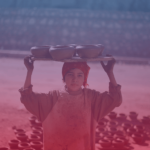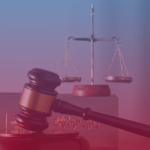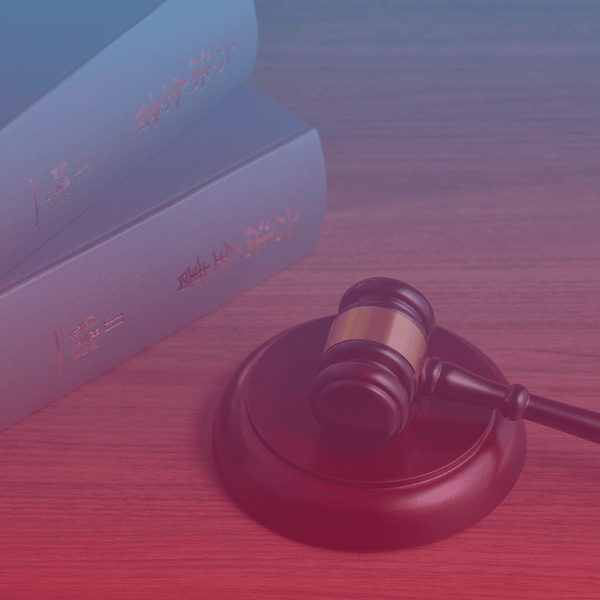
Written by: Nicolás Feal* (nicolas.serrano@udc.es)
Edited by: Lucia Torlai
The 1990s Russian Federation was marked by political upheaval and socio-economic reform, as the world saw the fall of the largest socialist empire, the Union of Soviet Socialist Republics (USSR), and Russia was forced to adapt to liberalism or something new. After the Soviet Union’s collapse in 1991, former Bolshevik republics pursued independence and structural change. While many nations embraced liberal democracy and market economies, others merely masked emerging authoritarian regimes. The latter tendency has resulted in today’s autocratic Russia, a country with minimal civil liberties and an ideologically regressive state shaping its domestic and foreign policy (Stoner & McFaul, 2015)
The scenario of post-soviet Russia’s struggle to reshape the state in the 1990s raised questions about the Western world’s efforts to promote democracy. Did Western powers fail to promote a sustainable model of democracy in Russia, or, on the contrary, did Russia fail its democratisation process? We must consider key aspects of Russia’s transformation such as the electoral matter, the architecting of the state apparatus, and the role of civil society and its mingling with foreign assistance.
Boris Yeltsin, president of Russia between 1991 and 1999 was a symbol of democratic values and a defender of freedom since his resistance to the attempted coup in 1991, later becoming in the eyes of many observers the man who would lead Russia into liberal democracy (Rutland, 2000). In this sense, Yeltsin emerged as a leader capable of carrying out three simultaneous and equally difficult tasks: ending the Soviet power structure and replacing it with liberal and democratic institutions, introducing capitalism, and conforming the new Russia to the idea of national identity (Rutland, 2000).
This article will argue that the definition of what a democratic Russia might look like according to the US and other NATO allies was rather simplistic, which, combined with the Kremlin’s efforts to undermine the will of the Russian people, resulted in a hybrid regime where most elements of democracy could be found in the country, albeit inefficient and corrupt on closer inspection (Gel’man, 2021).
The electoral process and the consolidation of a new Kremlin
At a time of institutional reform, Yeltsin advocated a presidential model, guaranteed by the yet-to-be-written Russian constitution, in which the executive would also have legislative powers. This brought him into conflict with the parliament. The constitutional crisis of 1993 led to the dissolution of the Duma by presidential decree and the subsequent military intervention in the Russian White House after the deputies refused to accept what appeared to be a coup d’état (Chatterjee, 2022).
Over the years, Yeltsin became increasingly unpopular among the Russian electorate. Nevertheless, an aggressive media campaign and a populist speech calling for a fight against communist regression – the main opposition candidate was communist partisan Gennady Zyuganov – ensured Yeltsin a second term, albeit with weak political support at the national level (Mendelson, 2001).
Overall, the introduction of multi-party elections did not prevent Yeltsin from remaining on top throughout the decade. In constant fear of losing power, Boris Yeltsin began to shape the Duma by offering favours and buying influence on opposition parties. His government’s idea was to create a patronage network of corrupt politicians. By the end of his term, the State Duma had become an informal politburo, almost autocratic in nature (Rutland, 2000). This didn’t mean that other political parties had virtually ceased to exist. There was still critical opposition to the Kremlin, but its opportunities to reach power had been significantly reduced by 1999, a situation reinforced by Putin in the early 2000s (Gerrits, 2010).
Civil society and the rule of law
After the 1993 crisis, the Russian administration installed a new Constitutional Court that acted at the Kremlin’s will, and the constitution was designed to conform to Yeltsin’s vision of the Russian government, from which the legislature emanates. At the municipal and regional level, the composition of judges and attorneys in courts was also characterised by partisanship. These circumstances made the progress towards democratisation incredibly difficult, since in the absence of the rule of law and without mechanisms to ensure the people’s control over state institutions, there was little guarantee that civil liberties would be protected (Rutland, 2000). It has been argued that the rights Russians enjoyed in the 1990s were less a result of federal goodwill and more due to reduced oppression, driven by Yeltsin’s fear of popular rejection (Gerrits, 2010).
The establishment of a relative regime of freedom was perceived as something positive, and the vast majority of Russians were in favour of the right to free speech, free association and free media. Moreover, access to foreign products and services strengthened the idea that the Westernisation programme was indeed beneficial (Chatterjee, 2022). Ironically, it was this pro-democratic and pro-liberal – or at least anti-communist – sector of the population which played a major role in bringing Yeltsin to power and keeping him there until the end of the millennium. Yeltsin needed the support of people from the big cities who looked up to Western standards of living and believed that democratisation would lead to an improvement in the quality of life.
Most Western governments, such as the United States, the UK and France, focused on the positive – yet limited – results of the liberalisation process and campaigned on the image of a resurgent Russia, finally free from Soviet tyranny. In particular, most of the United States Agency for International Development (USAID)’s democracy promotion assistance to Russia during the Clinton administration (1993-2000) was aimed at boosting democratic values among citizens. Clinton used this campaign to sell his democracy promotion compromise to the American public (Mendelson, 2001).
In addition, the efforts of activists and NGOs operating in Russia helped to develop a political conscience, and participation in elections increased significantly by the year 2000. Ultimately, however, such strengthened involvement of the Russian public had no impact on federal policy because it was unable to directly challenge Yeltsin’s administration (Mendelson, 2001).
Failed liberalisation and political consequences
Perhaps even more damaging than Russia’s political failure in the 1990s was the economic turmoil that followed the end of a centralised, planned economy. President George W. H. Bush (1989-1992), and especially his successor Bill Clinton (1993-2000), were confident that their Russian counterpart was committed to an agenda of westernisation and focused much of the United States’ financial and technical assistance on the economic sector. Market reform had become a priority, as reflected in the USAID budget allocated to liberalising the Russian economic system (Mendelson, 2001).
However, Yeltsin’s shock therapy plan to capitalize on state assets and industries was not implemented in the same way as in other post-communist countries. The idea was to allow citizens to own shares in previously collectivised companies, but the currency crisis that Russia was going through. left most people unable to participate in the privatisation. This, combined with a pre-existing culture of corruption, meant that a few members of the old Soviet nomenklatura with sufficient purchasing power became the sole owners of most national industries. This phenomenon created a new economic elite: the oligarchs. To control them, the government gave them positions of power within the state apparatus, further strengthening the Kremlin’s umbrella (Chatterjee, 2022).
The National Question and New Leadership
Lastly, a third issue, crucial to the formation of the Russian Federation as a state, was not fulfilled: the creation of a national identity for the Russian people. Ethnic Russians already understood themselves as a nation; indeed, the very independence of Russia from the USSR is largely an outcome of nationalism, both as an expression of the desire for self-determination and as a response to the independent movements of other republics since 1989 (Gregor, 1998).
Thus, it was not a question of ethnic identity, but of the purpose and form of the state. Russia had to decide on its political model and economic system, the composition and administration of its territories, and both its domestic and foreign policies. As noted above, the political and economic line was drawn, but there was a clear lack of civil unity within the world’s largest nation. The regionalist tendencies of the 1990s and the weakness of the Russian government have led to integral instability, exemplified by the Chechnya Wars and Russia’s involvement in the War on Terror (Rutland, 2000).
By the time Yeltsin’s second term began (1996-1999), new issues emerged, such as the struggle between centralisation and loose federalism, and between protectionism and internationalism. The multiple incognitas and disenchantment that grew year by year in the population as a result of poorly implemented economic and social reforms were reflected in the lack of a cohesive civil society prepared to confront democratisation and stand up for liberalised institutions (Rutland, 2000).
This panorama provided the perfect scenario for the appearance of a strongman. When Yeltsin retired after the 2000 presidential elections, Prime Minister Vladimir Putin came to power with a historic majority of votes. Putin was a man of principle, a responsible, sober and charismatic politician, a technocrat whose role during the second Chechnya campaign increased his popularity, which, together with the improvement of the Russian
economy, secured him a very high approval rating, at least until 2012 (Stoner & McFaul, 2015).
Putin consolidated his power by suppressing the opposition, imposing a protectionist agenda and spreading a populist, neo-conservative, ultranationalist and military doctrine that turned the country into a de facto autocracy, described by some observers as a clerical-fascist state (Gerber & Chapman, 2018). In this regard, Radiff (2012) argues that there are many similarities between the history of the Weimar Republic and that of the Russian Federation. The defeat in a war and the end of an empire, a failed democratisation process, a critical economic crisis, the emergence of a populist leader with an ethno-nationalist speech and the invasion of a neighbouring country. This showcases how historical patterns of political inefficiency and socioeconomic instability often hinder democratization and lead towards totalitarianism.
Conclusion
Western powers overlooked the underlying problems and ignored the identity crisis from which the country was suffering. All this was embedded in a philosophy of ‘what worked once will work again’ (Rutland, 2000). The American approach to democracy promotion in Russia was a very universalised one that did not consider the many factors surrounding Russia as a state: its historical lack of democratic institutions, its financial plight, the size of its territory, the social structure of the country (Chatterjee, 2022). Moreover, Western nations were concerned about Russia’s compliance with the law in the international community but did not comment on the Yeltsin administration’s many shortcomings when it came to the rule of law and the independence of public institutions.
On the other hand, Boris Yeltsin turned out to be an authoritarian figure who paved the way for Russia to become an elective autocracy (Gerrits, 2010). As a result of economic and sociopolitical uncertainties, the Russian population began to distinguish between what they considered to be democracy – more related to financial stability and general individual non-political freedoms – and liberal democracy or liberalism, which was seen as an evil plot by Western powers to reduce Russians to poverty and servitude (Gerrits, 2010). Consequently, the loss of democracy as a value in Russian collective imagination implies a loss of rights and a general regression of national institutions. Not only has the West missed an opportunity to include Russia among the post-Cold War liberal democracies, but it is also unlikely to have another chance.
**The author is a student at Universidade da Coruña. The responsibility for the contents of this commentary rests only with the author and does not represent the views and work of the Universidade da Coruña. Please feel free to get in touch for suggestions and comments: nicolas.serrano@udc.es
References
Chatterjee, A., 2022. Democratization in Russia: Expectations and experiences.. International Studies, 59(4), pp. 382-408.
Gel’man, V., 2021. Constitution, Authoritarianism, and Bad Governance: The Case of Russia. Russian Politics, 6(1), pp. 71-90.
Gerber, T. P. & Chapman, H. S., 2018. Familiarity breeds contempt? Knowledge and understanding of democracy, support for democratization, and global city residence in Russia. Democratization, 25(3), pp. 481-503.
Gerrits, A. W., 2010. Exploring democracy in the Russian Federation: political regime, public opinion and international assistance. Contemporary Politics, 16(1), pp. 33-48.
Gregor, A. J., 1998. Fascism and the New Russian Nationalism. Communist and Postcommunist studies, 31(1), pp. 1-15.
Mendelson, S. E., 2001. Democracy Assistance and Political Transition in Russia: Between Success and Failure. International Security, 25(4), pp. 68-106.
Radiff, F. W., 2012. Will Putin become Russia’s Hitler?, Maxwell Airforce Base, Alabama: Air Command and Staff College, Air University.
Rutland, P., 2000. Russia: Limping along towards American democracy?. In: American Democracy Promotion. s.l.:Oxford University Press, pp. 243-267. Stoner, K. & McFaul, M., 2015. Who Lost Russia (This Time)? Vladimir Putin. The Washington Quarterly, 38(2), p. 167–187.

 The ’Ndrangheta’s Infiltration and Threat to European Institutions
The ’Ndrangheta’s Infiltration and Threat to European Institutions  From Paper to Practice: How Grassroots Norms Undermine Gender Rights in Pakistan
From Paper to Practice: How Grassroots Norms Undermine Gender Rights in Pakistan  Exploited Childhoods: The Role of Global Corporations in Perpetuating and Mitigating Child Labour
Exploited Childhoods: The Role of Global Corporations in Perpetuating and Mitigating Child Labour  Human Rights Challenges in Addressing SLAPPs in Media, NGOs and Journalism in the EU
Human Rights Challenges in Addressing SLAPPs in Media, NGOs and Journalism in the EU 


